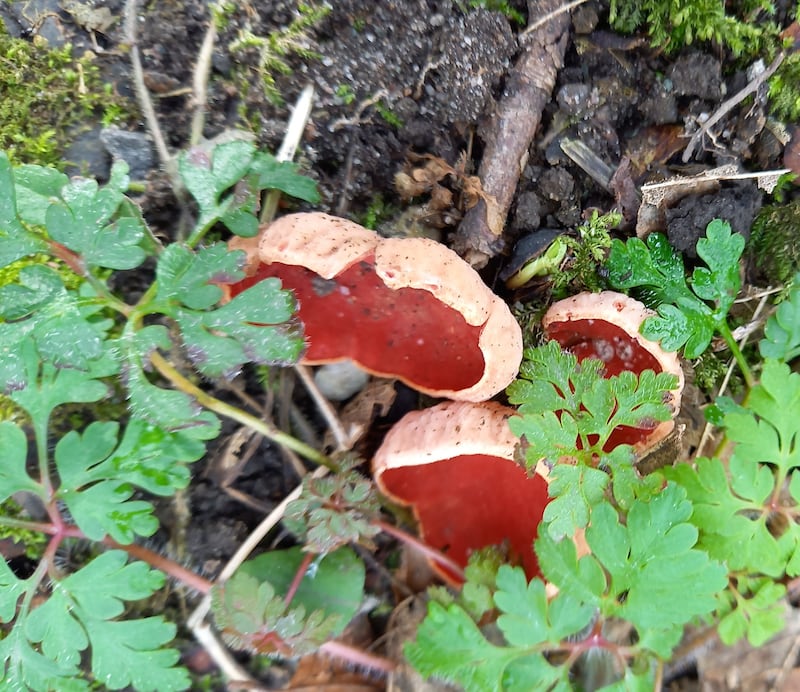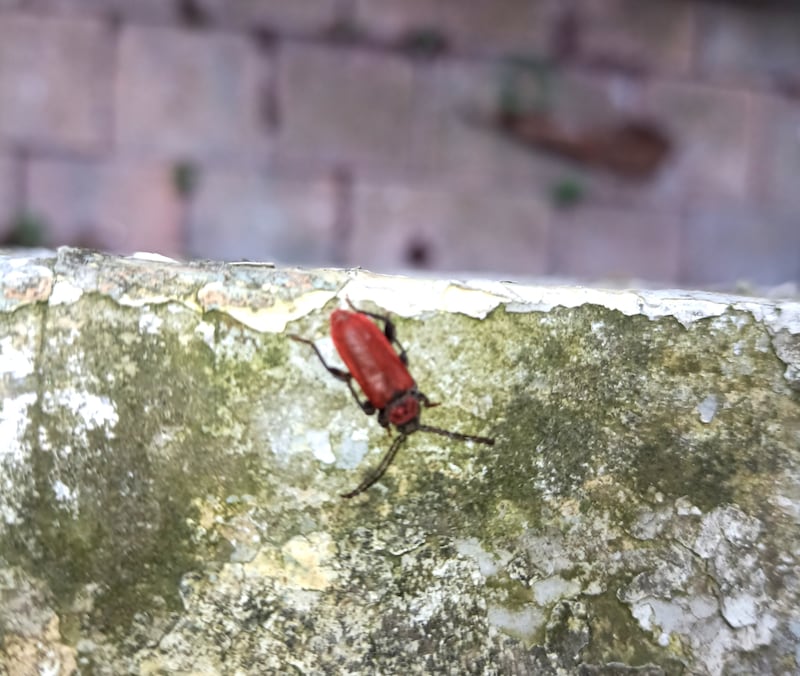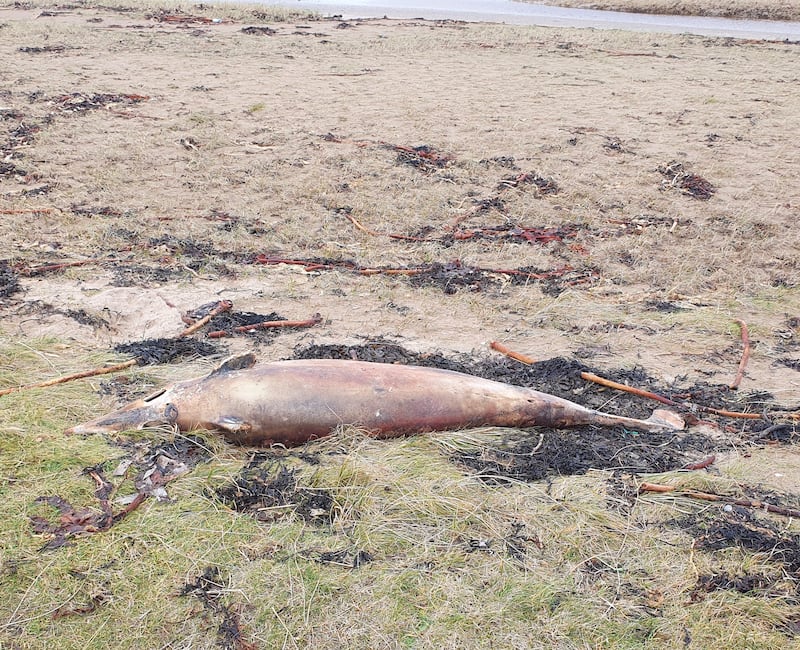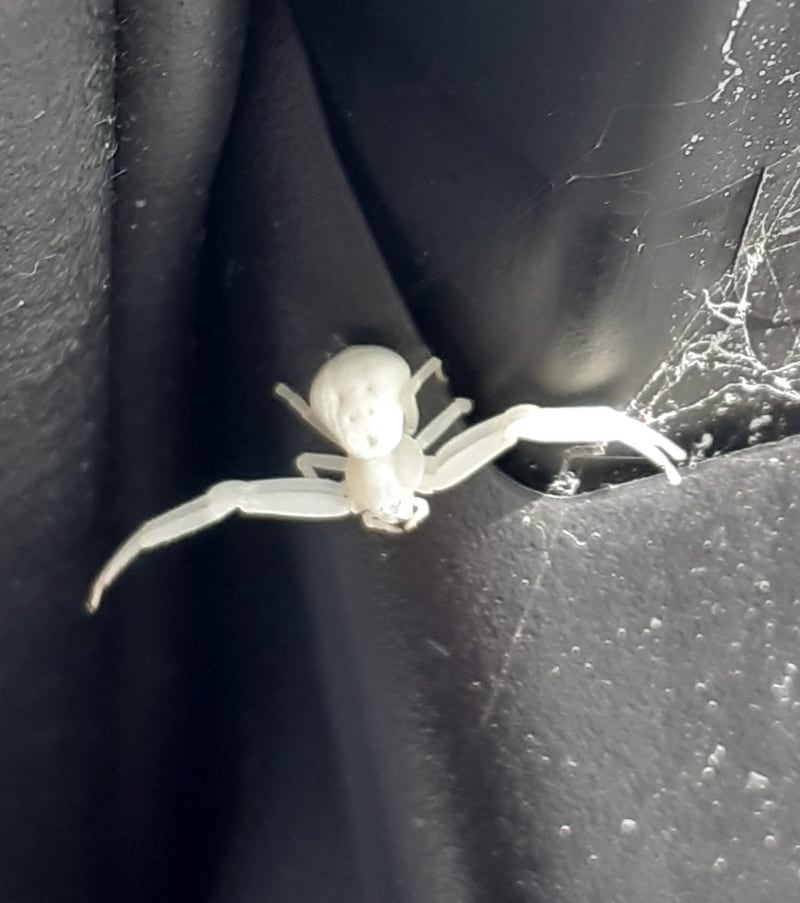I have three acres of oaks planted on my small farm and I often see two or three ladybirds together hibernating on the trees. I came across this lovely bunch of seven last week. Interesting that they nearly always use the south-facing side of the trees. Kevin McDonnell, Co Cork
Seven seven-spot ladybirds on the south-facing side of the tree. As they spend the winter in hibernation as adults, they seek out sheltered spots. Naturally, they choose the south-facing side of the tree as this must be the most suitable in your woodland. These are one of our most common and widespread native ladybird species. They will wake up and breed soon with both the adults and their subsequent larvae feeding on a wide variety of aphids, thus lessening the burden on the leaves of your oak trees.

This fungus was seen on a log in Westport House, Co Mayo. What is it? Paddy Demery, Co Wicklow
The same fungus has caught the attention of two other eagle-eyed readers as well: John Byrne while on his morning walk in Laraghbryan, Maynooth, and Cornelius Delahunty in his garden near Naas. It is the scarlet elf cup (Sarcoscypha austriaca), which is common on buried twigs of birch and willow at this time of year and earlier.

This insect was found in our house this week and was gently evicted (twice). We think it might be some sort of beetle. Could you help please? Danann and Ruadh Butler, Co Dublin
It is indeed a beetle – the dreaded lily beetle, which eats the leaves, stem, buds and flowers of lilies. This invasive species was first recorded here in 2009 and has now spread through east Munster and Leinster. I hope you or your neighbours are not growing lilies in the garden.

During lockdown in January 2021, we came across this fish (?) on the river estuary on Lahinch beach in Co Clare. Can you identify for us? Anonymous, Co Clare
Kevin Flannery of Dingle Aquarium tells me that it is not a fish at all but a dolphin. He does not specify the species. Perhaps this was the final resting place of Fungi, who has been missing since October 2020. Or, perhaps not – Fungi was a male bottlenose dolphin.

I found this spider in my car. Wondering what type it is. Michael McCormack, Co Dublin
This is the unmistakable flower crab spider – a female – with a very plump abdomen and two front pairs of legs much larger than the other two. To catch its prey, this spider sits motionless in flowers (usually white or yellow ones) and ambushes insects that visit to feed on nectar. It can even change its colour from white to match the colour of the flower. When the hapless insect sticks in its head, the spider bites it and paralyses it with its venom. It can kill much bigger insects than itself, such as bees and butterflies. Hence its common English name – White Death.

This was found just outside the back door in a housing estate. Pygmy shrew? Was it left by a cat or dropped by bird? No obvious signs of cause of death. Patrick Timmins, Co Kildare
It is certainly a shrew – the long pointy snout is the distinguishing characteristic. But, which one? The white-toothed shrew, first recorded here in 2008, is larger than the pygmy shrew, has white teeth (rather than the pygmy’s red-capped ones) and long white hairs on its tail. Having foul-tasting glands, both species are unpalatable to cats but not to birds of prey. So, I suspect it is an offering from a cat.
Please submit your nature query, observation, or photo with a location, via www.irishtimes.com/eyeonnature.














